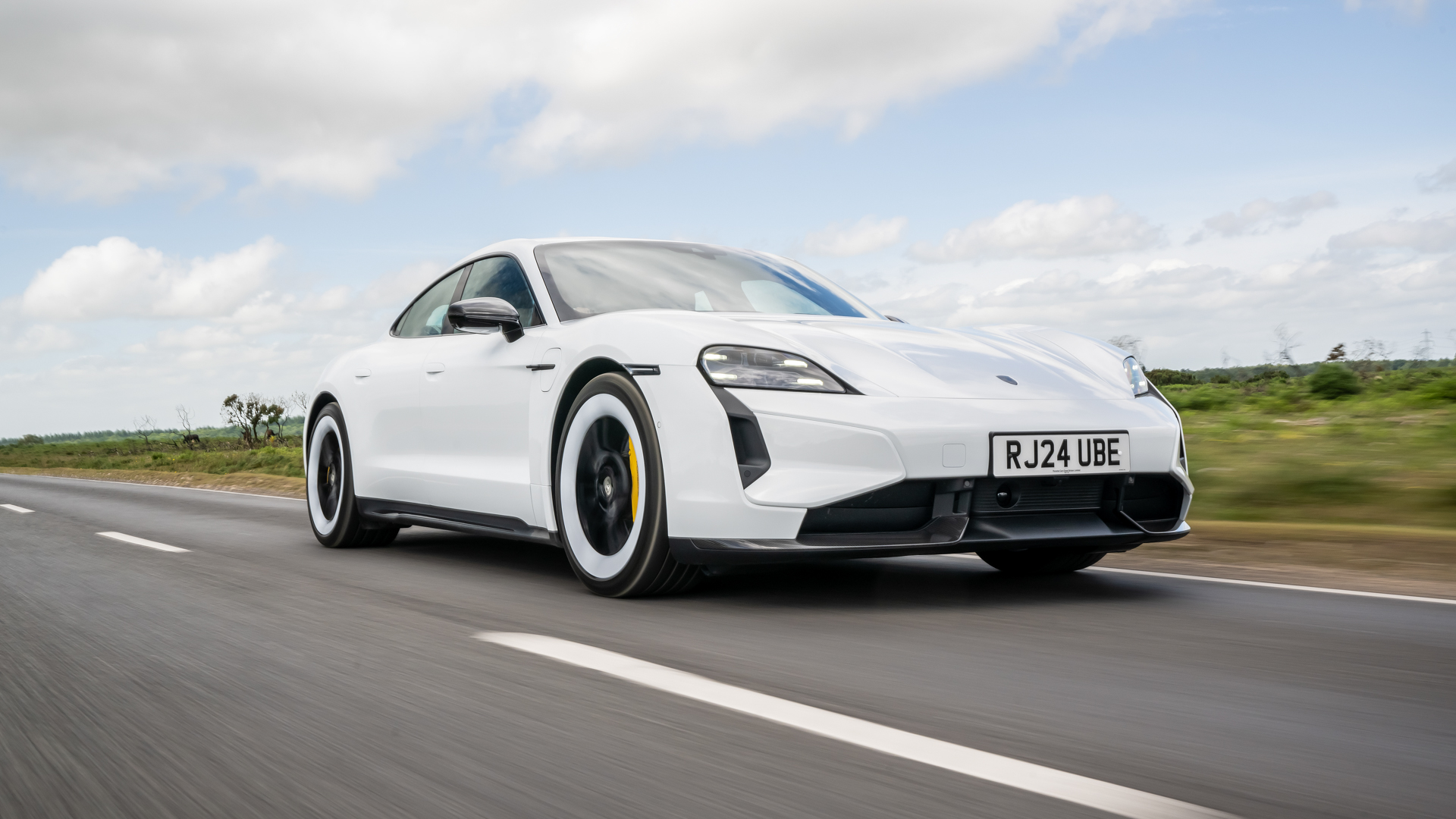
In the olden days, before electric vehicles had more power than V8s, cars would be in production for around five years before receiving a facelift. This nip-and-tuck treatment would usually include a new set of headlights, some bigger wheels and perhaps an update to the dashboard touchscreen. There might even be a bit more power if you’re really lucky. Then another five years would go by, and the car would be replaced entirely by an all-new version.
But with EVs, things are very different. Motor and battery technology is improving at such a rate that the midlife face-lift of a car like the Porsche Taycan – which still looks brand new, five years after it went on sale – includes massive improvements across the board.
Calling the new Porsche Taycan a “facelift” simply doesn’t do it justice. Because, while on the outside it looks just like the old one – spotter’s points are earned for noticing the new bumper and light design – under the skin it’s a different story.
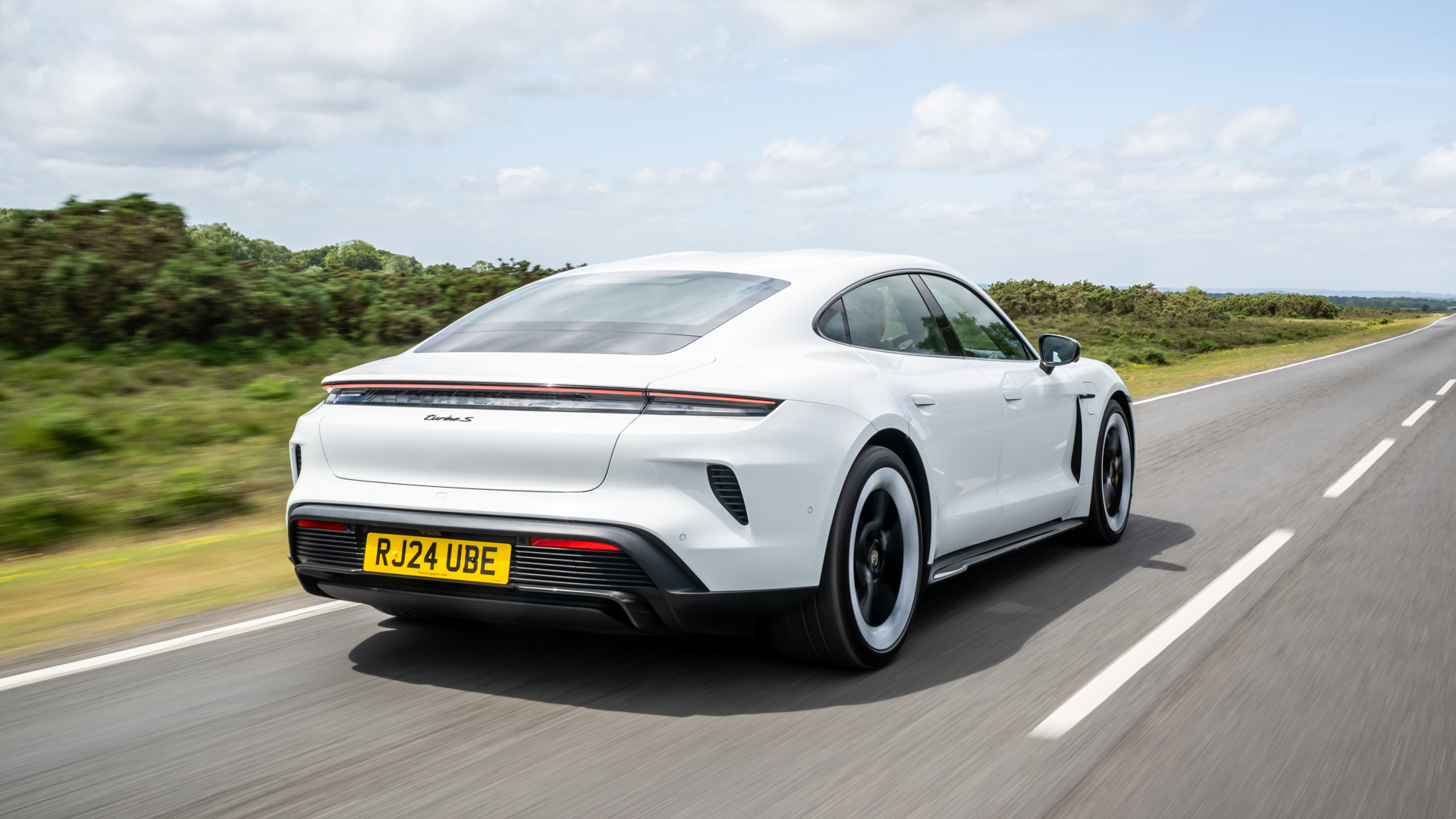
There’s faster charging. Much faster charging. The old Taycan was already one of the quickest cars to refill its battery, topping out at about 270 kW if you could find a suitable charger, but the new model manages a whopping 320 kW. I saw this in action during a passenger ride of a pre-production prototype earlier this year, and was left slack-jawed. It’ll now charge from almost-empty to 80 percent in just 18 minutes. You’ll barely have time to find the service station bathroom before it’s time to get going again.
Although battery capacity is only slightly improved, at 97 kWh, the new pack weighs less and the range has increased substantially. Porsche claims a 35 percent improvement for the entry-level Taycan, with up to 421 miles now possible if you drive sensibly. It even claims the absurdly powered Taycan Turbo S driven here can achieve an efficiency of 3.5 miles per kWh. Multiply that by the capacity and you’re looking at 340 miles before you’ve added a bit more with some regenerative braking.
And then there’s the performance. The Taycan has always been a quick car – ferociously so in Turbo S guise – but the new model takes things to another level. The dual-motor, all-wheel-drive setup produces 775 horsepower when driven normally, which is more than just about any supercar built before the Bugatti Veyron – and this Porsche is a sensible four-seater with two boots, remember.
But even then, the Porsche still has plenty in reserve. To access the full arsenal you need to stop the car, select Sport+ mode via a dial on the steering wheel, then stand firmly on the brake pedal and press the accelerator fully to the floor. This engages launch control and unlocks full power, which means 952 horsepower and 1,110 Nm of torque. Now put your head back against the seat, lift the brake and hold on tight.
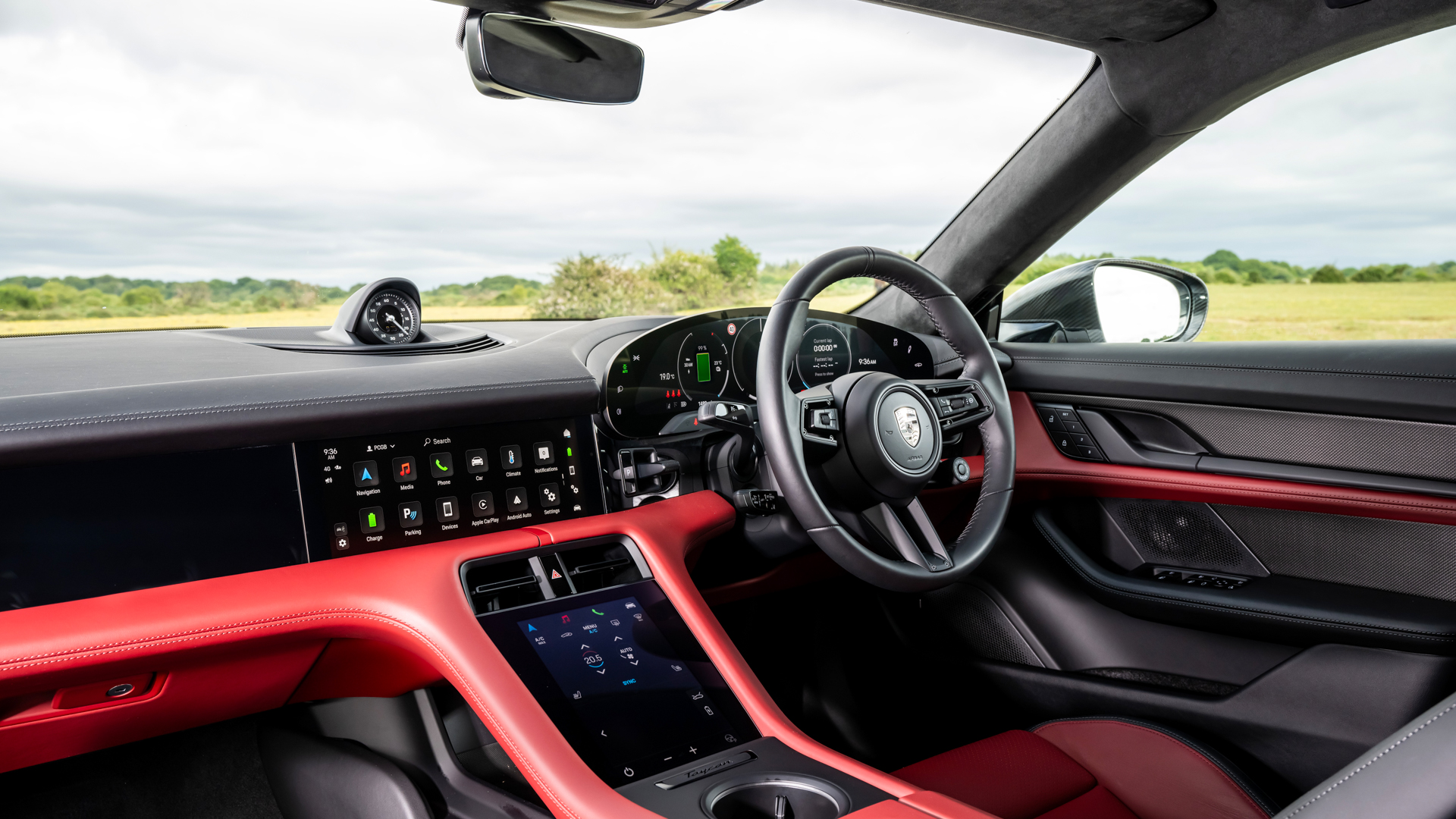
Even on a warm, dry road the Taycan’s four Goodyear tyres momentarily scrabble for grip before hooking up and catapulting you towards the horizon. The initial launch of a powerful electric car is always shocking, but with the Taycan Turbo S that brief moment of conflict between electrons and physics is the easy bit. A tenth of a second or so later, and only once the traction control deems you fully responsible, does the Taycan really get into its stride. Afterburners fully lit, 62 mph is dispatched in 2.4 seconds – according to Porsche, which is famously conservative with its performance figures.
Not since driving the Bugatti Chiron Super Sport have I felt acceleration like it. And while the latest Porsche 911 Turbo S is behind on paper (independent tests claim 2.5s to 60 mph) the way it and the Taycan muscle their way from 20 to 60 mph feels similar.
Both leave their driver convinced they’ve engaged Warp Speed and cheat-coded their way around the space-time continuum, Einstein be damned. This otherworldly moment in the Taycan’s acceleration phase is best contextualised with Porsche’s claim of 49 mph to 74 mph in 1.4 seconds. One-point-four. In a car that weighs 2,295 kg without a driver. Overtaking will never be the same again.
As always, the two-speed gearbox of the Taycan helps add an extra dose of theatre. A brief pitch change from the synthetic soundtrack suggests the Taycan changed from first to second somewhere around 60 mph, but exactly when it shifts depends on how you’re driving.
Keep your foot in (on a derestricted Autobahn, of course) and Porsche says it’ll hit 124 mph in 7.7 seconds and the Turbo S’s top speed is 162 mph.
Want to go even quicker? T3 recently experienced the Taycan Turbo GT, Porsche's new electric flagship. It packs even more power – 1,020 hp, to be precise – and accelerates even more violently, hitting 62 mph in a claimed 2.2 seconds.
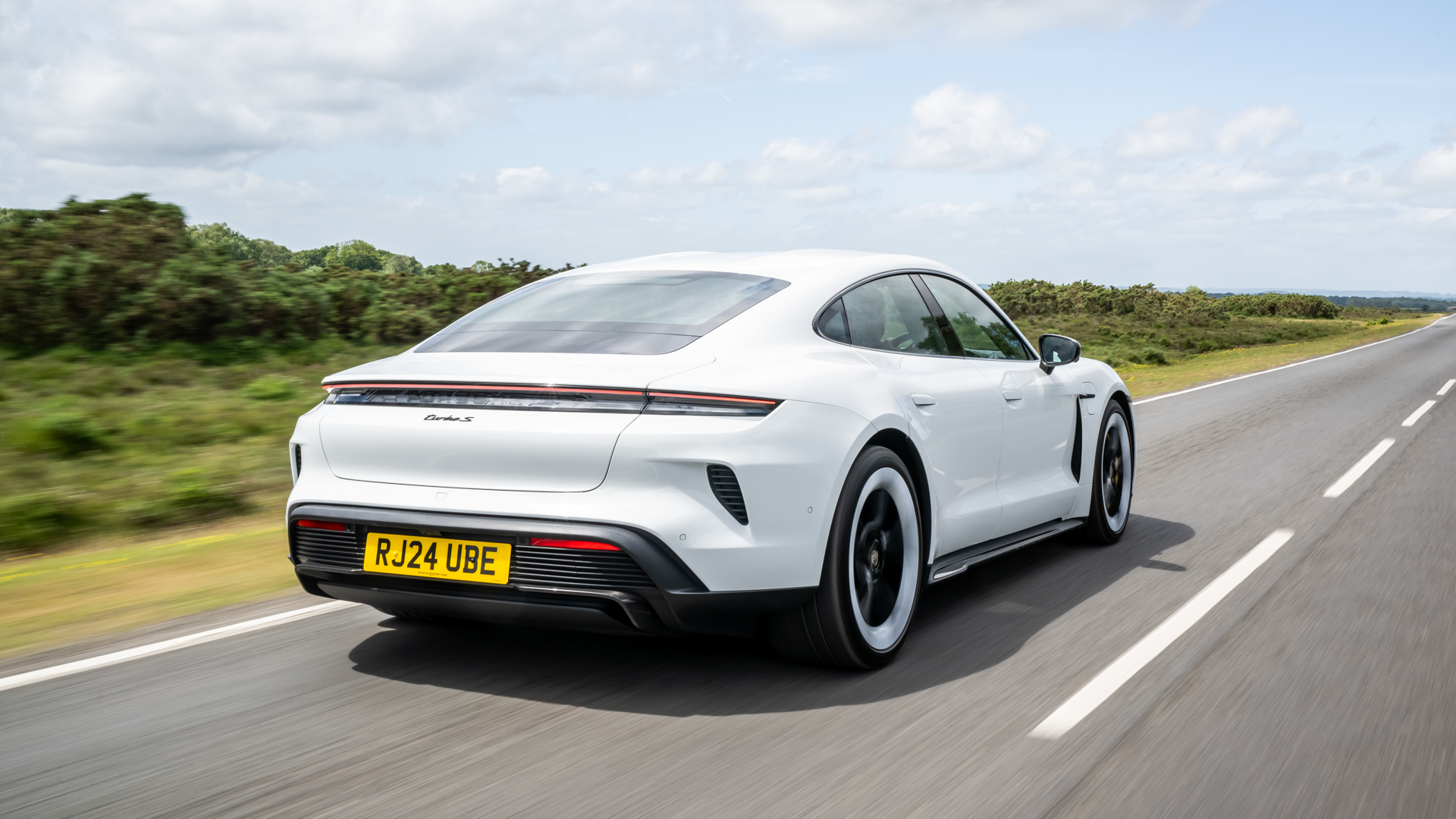
So it’s fast. What else can it do?
Glad you asked. The updated Taycan is also fitted with a new active suspension system that laughs in the face of physics. It lowers the front of the car slightly when you accelerate and raises it when you brake, then lowers the inside through corners. The goal is to eliminate pitch and roll and create a sense that the car is totally flat at all times, while ensuring load is distributed equally across all four tyres.
It’s called Porsche Active Ride and not only does it aim to cancel out lean through the corners, it’ll actively push against it. This means the Taycan leans into the bends slightly, like the rider of a motorbike, instead of being pushed outwards. Squatting backwards under hard acceleration is also removed, and so too is diving forwards under heavy braking. The system also does away with the need for any conventional anti-roll bars.
I need to spend more time in the car to truly get under its skin, but on first impression Porsche Active Ride is a system that doesn’t slap you in the face at the first opportunity, but is quite obvious once you start looking for it.
Does it improve the Taycan? It has the potential to smooth out regular, day-to-day driving – and could be something that passengers like, too – but when driving more keenly it could take away some of the enjoyment. It’s sometimes helpful to feel a car moving beneath you; this sense of breathing in time with the road can help communicate more clearly what it’s doing and how weight is being transferred through the corners and under braking.
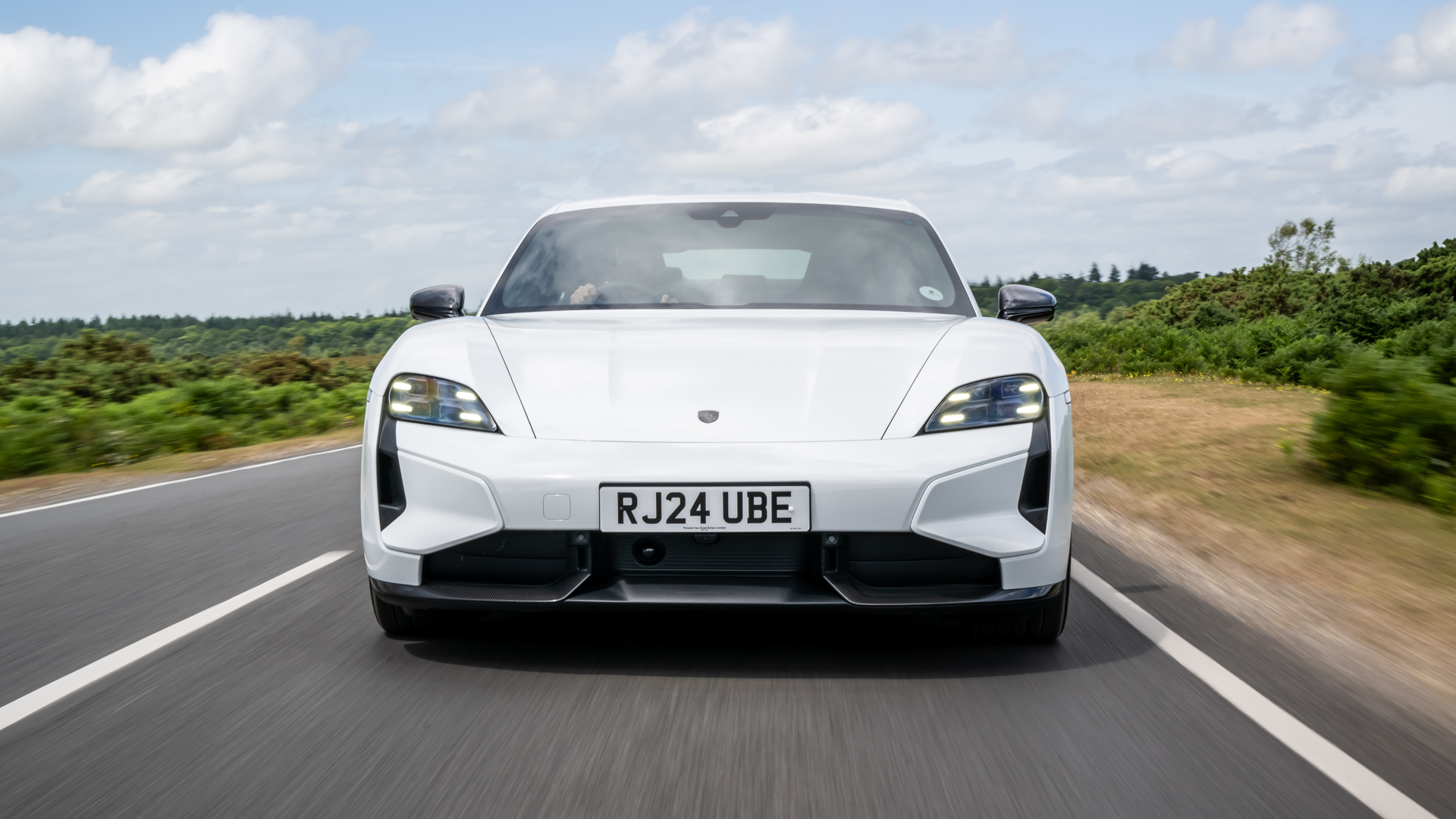
Another feature of the trick suspension is how the Taycan quickly lifts by 55 mm when the door is opened. It’s supposed to make getting in and out easier, but the Taycan is hardly a low-slung supercar, and while slightly beneficial I fear unsuspecting passengers will leap equally far out of their skin the first time it happens. No one expects a car to move when you pull at the door handle.
That said, there’s only so much you can take in on a first-drive like this. I’m keen to spend more time with the new Taycan to fully appreciate the trick suspension. And to wonder if I’ll ever truly get used to that brutal acceleration.







